Bondi, Greenwich hoarders among NSW worst hoarder houses│photos
See inside the multi-million dollar homes where some of NSW’s biggest piles of garbage – some consisting of urine and even a body – have been dumped.
Lifestyle
Don't miss out on the headlines from Lifestyle. Followed categories will be added to My News.
From a woman who was trapped underneath her decades-old stacks of junk to a notorious Bondi property involved in a 20-year legal battle, hoarder houses are an issue across the whole of NSW.
Local councils contacted by NewsLocal agree hoarding is a complex issue which often affects the whole neighbourhood, especially when the behaviour continues for an extended period of time (like many of the homes on this list).
Councils are restricted in the action they can take against hoarders, as they are unable to forcibly remove debris unless it “is causing or is likely to cause a threat to public health or the health of any individual”.
A spokeswoman for Inner West Council said the council has a difficult time clearing hoarded belongings because of the sentimental attachment of the hoarders.
“Historically, investigations have highlighted that hoarders view the items they have collected as important to their way of life, and consequently they are challenged to otherwise let go,” she said.
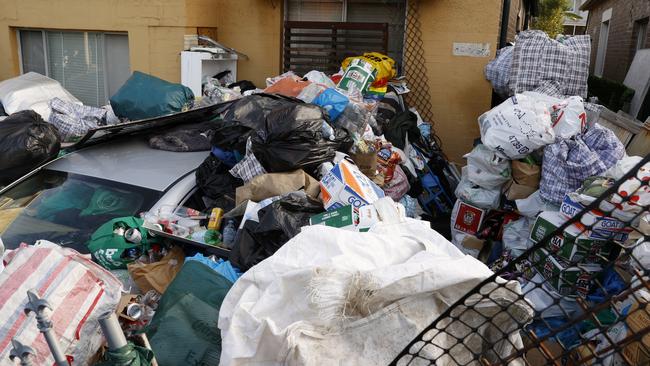
Despite the restrictions, Cumberland Council Mayor Steve Christou said local councils take the issue of hoarding seriously to protect the health and safety of their residents, as well as the neighbourhood aesthetic.
“Our community expects better and deserves better than piles of potentially dangerous debris accumulating,” he said.
“I don’t want our community to look like a ghetto.”
Interestingly, none of the local councils contacted by NewsLocal had noticed an increase in hoarding houses during the pandemic, even with the lockdown restrictions affecting most of the state.
However, all of the councils agreed there needed to be a compassionate and comprehensive approach to the issue of hoarding.
In a statement echoed by other local councils, a spokeswoman for Cumberland Council said better support services are required to assist those suffering from hoarding disorders to address the root of their behaviour and provide “a more long term solution”.
She also highlighted the need for a stronger and more holistic government approach to the issue, calling for a multi-agency approach to hoarding.
“All the agencies and service providers could greatly benefit from any additional resources, research and understanding of this mental health disorder,” she said.
See the list of the worst hoarder houses in NSW and how each council is tackling the problem.
Greendale St, Greenwich
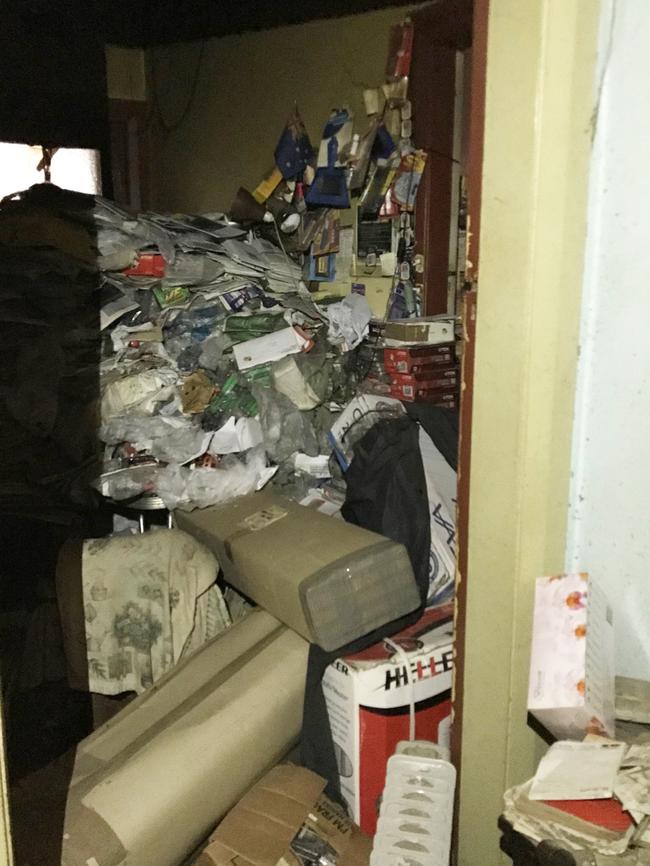
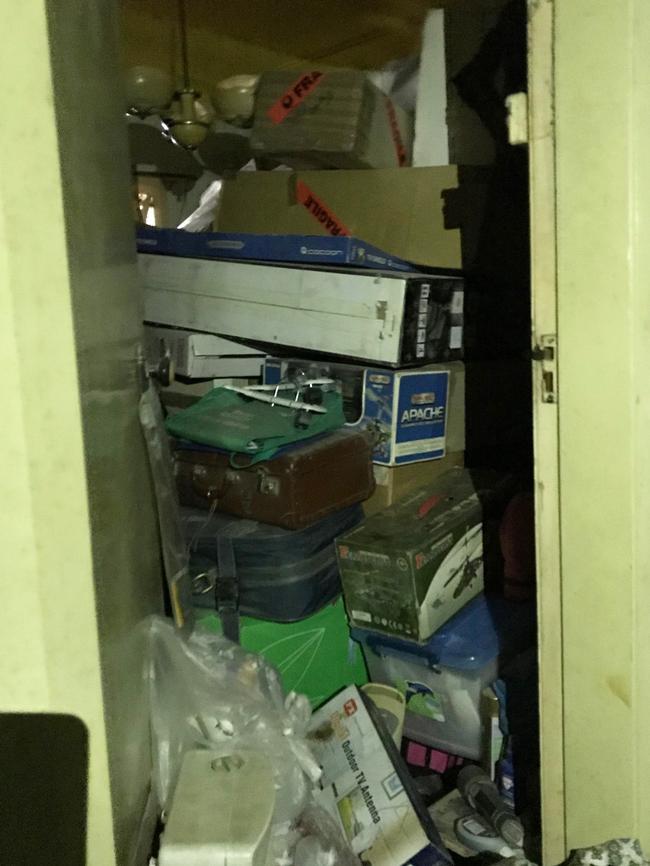
No list of the worst NSW hoarding homes would be complete without the Greendale St home in Greenwich in which the mummified body of a home invader was hidden for 15 years.
After the death of the homeowner in 2017, a crew sent to deep clean the house found a mummified body wrapped in carpet in between the towering stacks of rubbish. An examination revealed the owner of the house had been living with the dead body in his home for more than 15 years before his own death. He had attempted to mask the smell with 70 air fresheners.
Despite its creepy history, the land of the former hoarding house sold in March for $2.57 million. The 556 square metres are now completely cleared of rubbish and ready for a fresh start.
A spokeswoman for Lane Cove Council said the number of reported hoarding houses hasn’t increased during the pandemic and the council was able to provide a timely response.
“We have staff from both our Environmental Health and Community Services team that help should there be an instance of hoarding that requires Council’s support or action,” she said.
Barnsbury Grove, Dulwich Hill
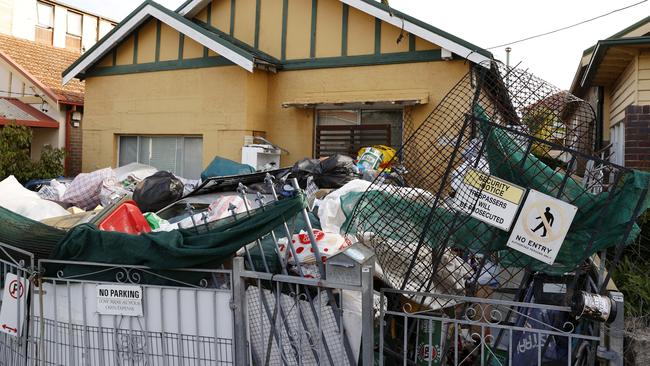
A home on Barnsbury Grove in Dulwich Hill has become a tense talking point for neighbours, who say the mountains of mess have been growing for more than three years.
The yard of the property is overflowing with rubbish, which is threatening to burst out of the fence containing it. Although neighbours report the house has always had issues, the amount of trash has increased and it has neighbours concerned about fire and safety risks.
A spokeswoman for Inner West Council confirmed the house has been a concern for the council for more than six months. She told The Daily Telegraph last month the council was preparing a brief of evidence for its legal team and building regulation manager about the house.
However, the spokeswoman said legal action was not always the best way to approach the complex issue.
“Hoarding is primarily a mental health issue, and is exacerbated by legal action and continues to recur,” she said.
“Council usually takes the option of communicating rather than litigating.”
Although council clean ups cost a lot of money, the council spokeswoman said they don’t fix the hoarding issue because they don’t address the underlying mental health issues.
Single Ridge Rd, The Slopes
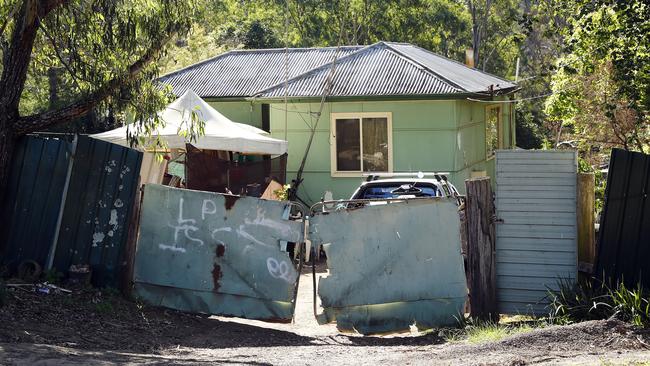
Isolation helps to keep prying eyes away, but in the case of this Hawkesbury property, a hoarding home has become an eyesore.
A sprawling 2 hectare property on Single Ridge Rd in The Slopes manages to be cluttered with junk, despite its size. The owner has hoarded old cars, appliances, caravans, umbrellas and other random items, on the property.
Neighbours have described the property as a “mess” but say the location has helped it avoid detection.
While Hawkesbury Council’s director of city planning, Linda Perrine, did not comment on this specific instance of hoarding, she pointed to the council’s holistic approach to tackling the issue.
“Council understands that hoarding is a disorder that requires a mental health diagnosis and that hoarding cannot be addressed through clean-ups alone,” she said.
Ms Perrine said the council worked with occupants affected by hoarding to provide additional assistance and lessen the stress of waste removal. Additionally, she noted council works to refer hoarders to community support organisations to understand and help with the condition of hoarding.
Malabar Rd, Maroubra
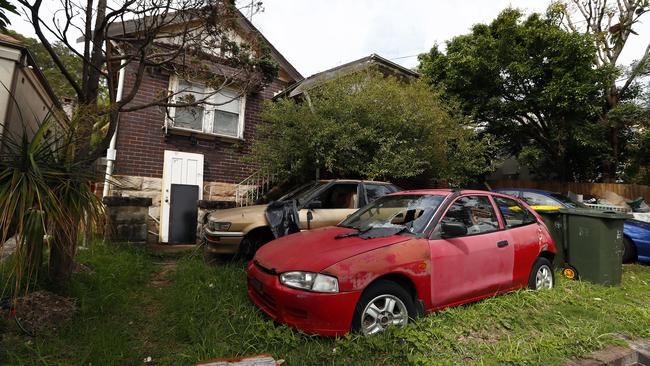
One of the worst hoarder homes in the state has been labelled “revolting” by the neighbours, despite being worth an estimated $2 million.
The front yard of the Malabar property in Maroubra is cluttered with cars, mounds of metal, and rats and there’s a washing machine crowding the veranda. Neighbours say the backyard is even more of an eyesore, and the rubbish has been piling up for 20 years.
A spokeswoman for Randwick Council said it had received six complaints about the property, and residents have been raising concerns about the house since 2005.
She said council officers were working with the homeowner to “improve the appearance of the premises”, which is cluttered with old building materials and spare parts.
According to the council spokeswoman, the council takes an empathetic approach to hoarder homes and their occupants.
“Hoarding behaviour is a complex issue with social, emotional and physical factors,” she said.
She also emphasised the need for compassion from the wider community in hoarding situations.
“It’s also important to remember that each of us can make a difference at an individual level to support family and friends that are experiencing anxiety and behavioural issues,” she said.
“That personal connection can really help someone from feeling isolated and more open to help.”
O’Neill St, Guildford
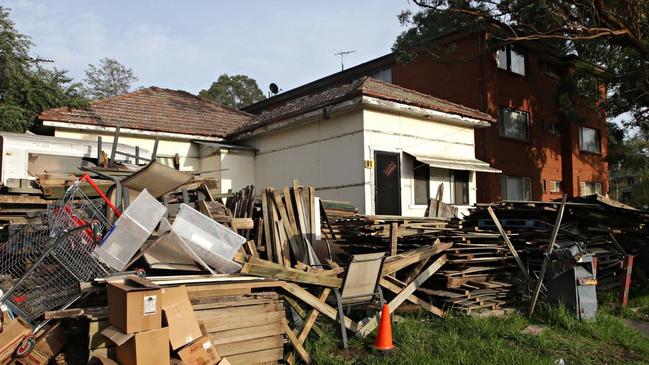
Being an artist and a handyman are both useful excuses to hold onto things that might become useful, but the neighbours of this Guildford man were not fooled. The renter of this O’Neill St property has enormous stacks of materials like timber and cardboard that completely cover the front yard of the property, leaving a narrow pathway to enter the home.
When the house sold in February last year, neighbours hoped the hoarding renter would be forced to change his ways after 15 years, but the new owners allowed him to stay. Despite the stacks of building materials, the house fetched more than $1.16 million.
A spokeswoman for Cumberland Council said the council first became aware of the hoarding house in January 2020 and initiated discussions with the property owner and tenant about the deteriorating conditions.
According to the spokeswoman, the council issued an order for the occupant to remove the materials in September last year and the property was vacated within months. The buildings on the property were demolished later in the year.
The council spokeswoman said the council strives to work with property owners to address hoarding issues without needing to resort to enforcement orders.
“Enforcement action from council is the last resort for dealing with hoarding and squalor matters, and is intended mainly to mitigate the immediate public health risk,” she said.
Cumberland Mayor Steve Christou said the council was serious about its responsibility for the safety and hygiene of its residents.
“Our community expects better and deserves better than piles of potentially dangerous debris accumulating,” he said.
“I don’t want our community to look like a ghetto.”
Boonara Ave, Bondi
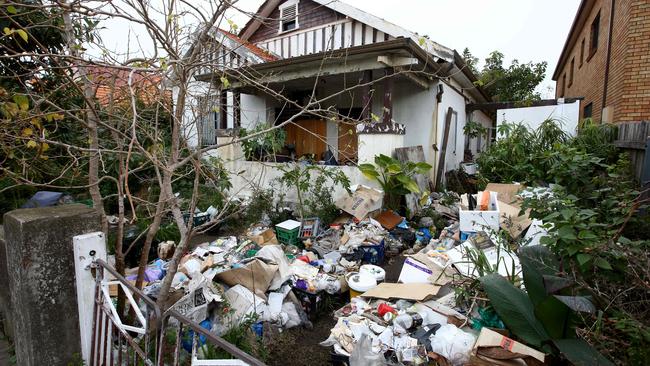
One of the most infamous hoarding houses in NSW is located in one of its most iconic suburbs. The hoarding home on Boonara Ave in Bondi has made headlines for the 20-year battle between the owners and the council, which has seen the house up for sale multiple times.
The house has been put up for auction by the council at least three times over the two-decade long war, but each time the owners have appealed the decision and covered the cleaning costs at the last minute. It’s one of the most litigious hoarder houses in Australia with ongoing court cases. In November 2019, two of the occupants were fined more than $5000 each for obstructing a court mandated council clean up of the property.
At least 15 clean ups have been attempted over the 20 years, for which Waverley Council is estimated to have paid hundreds of thousands of dollars.
The property is minutes from the beach and could be worth millions, but the property is notorious for the amount of trash piled high around the home.
A council spokesperson said the issue of hoarder houses was difficult for councils to resolve quickly because of the appeals process available to occupants.
Windred St, Orange
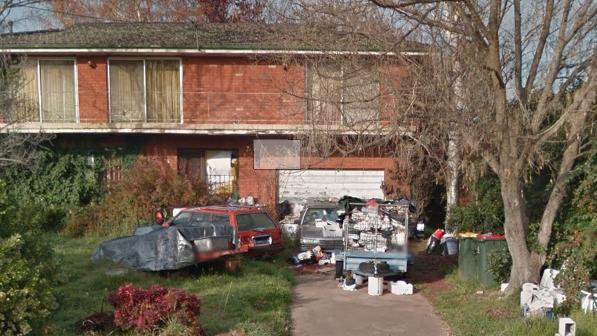
In regional towns which generally have more room to sprawl, it is less common to hear of hoarder houses encroaching on neighbours. However, the home on Windred St in Orange has been battling with council for years.
The owner has lived at the property for more than 50 years and the Orange Council has been granted ongoing approval from the court to enter the property to clean up when the rubbish becomes a hazard to the community.
The council clean ups have been numerous, with the latest council clean in May. A council spokesman previously said the cost of the clean ups was added to the rates to be paid by the homeowner.
Orange Council did not respond to requests for comments.
Brereton Ave, Marrickville
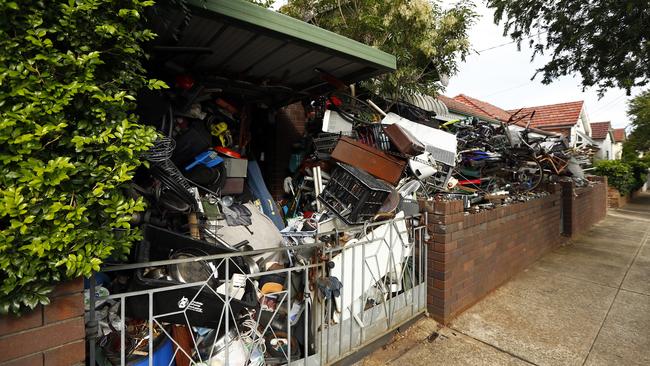
While it is valued at more than $1.6 million, the mountainous piles of scrap metal in the yard of this Brereton Ave, Marrickville, home take a lot away from the aesthetic.
The front of the home is barely visible behind the bicycles, wire fences and other extraneous metals stacked in towering piles in the yard. The wall of trash even obscures the way into the home, with the front gate completely blocked by junk.
The owner of the home told The Sunday Telegraph last year that everyone was getting into the act of hoarding because of the pandemic, but he was already ahead of the curve. Despite the man’s claims, a spokeswoman for Inner West Council said there had not been a measurable increase in hoarding houses during the pandemic.
She confirmed the Brereton Ave house had been a house of hoarding concern for more than six months, having received a number of complaints.
The spokeswoman said the council focused on acting with compassion when dealing with hoarding properties due to the underlying mental health component.
“Each reported case of hoarding comes with its own set of individual considerations and circumstances which council needs to understand and address,” she said.
“There is no ‘quick fix’.”
Boorara Ave, Oatley
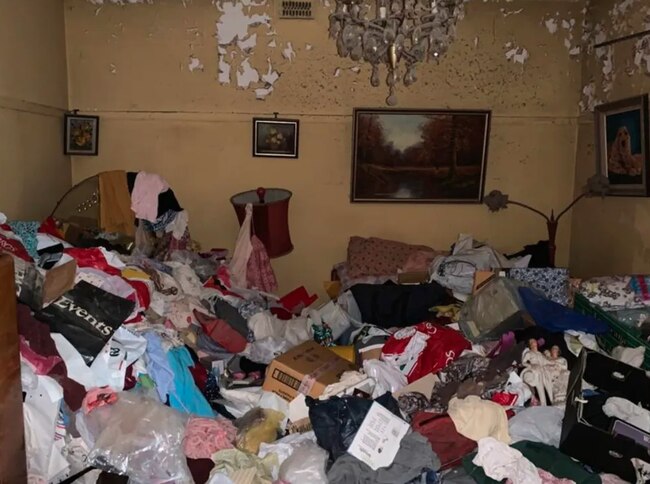
A home on Boorara Ave in Oatley sold for nearly $1.8 million, despite the fact that buyers could barely get inside the door.
More than a dozen buyers had to climb over stacks of rubbish to walk through the home, which was sold with the mountains of mess included.
Despite the difficulty in seeing the property, it sold for $1.78 million after a heated auction in April. Responsibility for cleaning the towering piles of trash falls to the new owners, who have to clean out the property before making the next move.
According to the auctioneer, even a complete teardown would require a tidy up to find the rudimentary aspects of the property like gas lines which would be required for a new home.
A spokeswoman for Georges River Council said the council collaborated with the state government to support and help occupants of properties with the potential to be used for hoarding.
Ewart St, Dulwich Hill
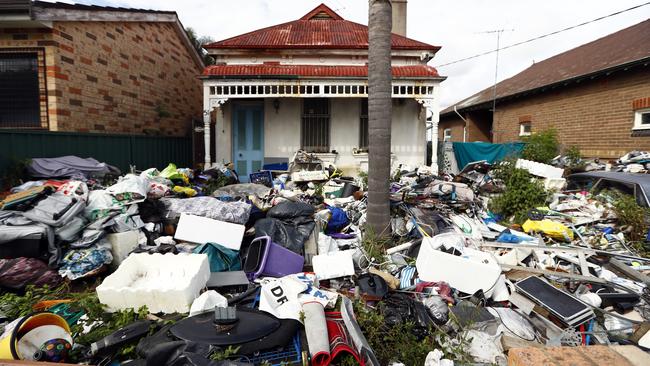
Although this home on Ewart St in Dulwich Hill is estimated to be worth more than $1.5 million, the value is severely deflated by the sea of scrap materials and miscellaneous trash.
Neighbours say the property has been a tip for more than two decades, with the owner piling more junk onto the mounds each year.
There is no clear path through the sprawling rubbish to get to the house, but the occupant told The Sunday Telegraph he runs a business from his crowded front yard.
The Inner West Council spokeswoman said the council is not currently investigating the house. In general, she said the council sought to treat each hoarder house according to its specific circumstances, “on a case-by-case basis”.
“The focus is generally on working with the property owner to reduce the amount of waste, if it is posing a potential threat to human health or risk of fire,” the spokeswoman said.
Elizabeth St, Mt Pritchard
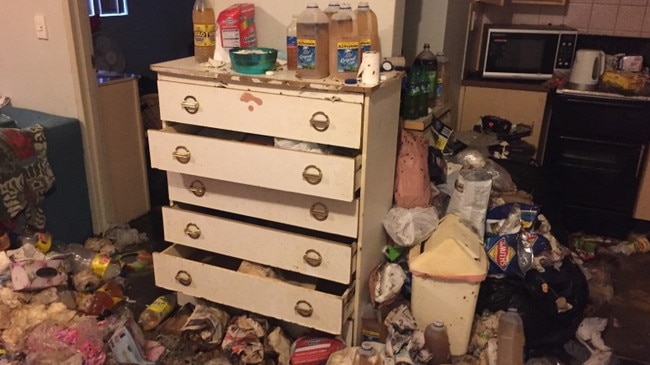
One of the most severe cases of hoarding in NSW took place in a housing commission property on Elizabeth St in Mount Pritchard.
When the occupant died in 2016, professional cleaners discovered they had been hoarding pungent items such as bottles of their own urine and used toilet paper.
The cleaners estimated more than a thousand cockroaches lived in the apartment, which was encrusted with rubbish.
Fairfield City Council did not discuss the specific house, but a council spokesperson said hoarding houses have a large impact on the council.
“Hoarding is a complex issue; and a long, expensive and emotional process for everyone involved,” they said.
Despite the trying conditions of the last year, the council spokesperson said they hadn’t reported an increase in hoarding complaints in the Fairfield area.
Delamere St, Canley Vale
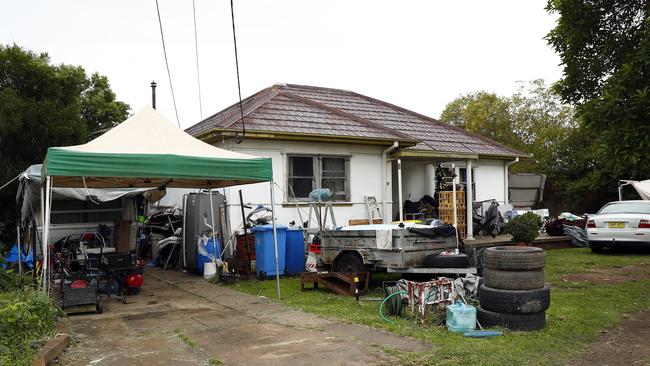
One of the most harrowing tales of hoarding occurred in a home on Delamere St in Canley Vale, where the owner became trapped underneath piles of her own possessions for more than 14 hours.
In November 2019, the woman nearly suffocated under the stacks of trash after she suffered a stroke. Rescue crews were unable to get inside because of the hoarded trash, so NSW Fire and Rescue were forced to pull out part of a wall and a window to get to the woman.
The team had to employ hydraulic equipment to access the woman and ensure more rubbish wouldn’t fall on top of her as they extracted her from the building. Among the piles of rubbish rescue crews pulled from the house were magazines and chocolate bar wrappers from more than 20 years ago.
Although Fairfield Council did not comment on the Delamere St house, a council spokesperson said the council tries to work collaboratively with residents affected by hoarding.
“Council takes the approach of getting co-operation from offenders, so that they are open to getting the support they need and are less likely to reoffend,” they said.
“As a last resort, where the owner does not co-operate or for safety, Council has no other choice but to pursue the matter in the courts.”
According to the council spokesperson, the full cost of dealing with hoarder houses is not recoverable by councils.
Elizabeth St, Ashfield
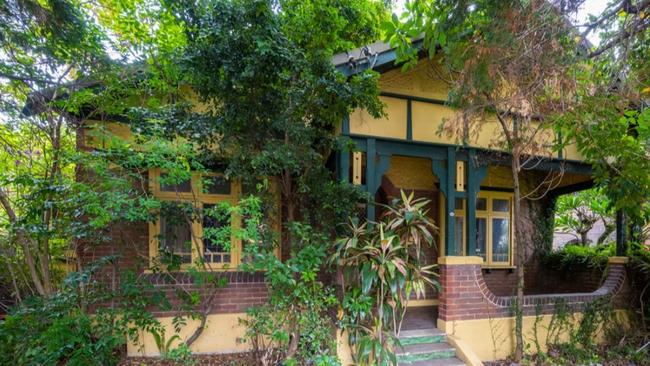
All it took to turn a cluttered nightmare into a multi-million dollar home was a reported $25,000 of cleaning. A hoarder’s house on Elizabeth St in Ashfield sold in April for $2 million after an injection of cash helped to clear the aisles of junk piled up throughout the house.
The rundown house attracted a crowd of more than 150 people and 27 bidders, despite having previously been inaccessible due to floor to ceiling trash piles.
However, the auctioneer estimated the cost of renovations to the home could be expensive given the extent of renovation needed to make the home liveable.





